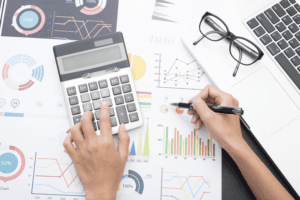
Young, fast-growing tech companies, for example, don’t generally pay dividends. Dividend capture is a more active, hands-on approach to harvesting dividend income. With dividend capture, it’s not necessary to hold shares of a company for a whole year or an entire quarter to earn the dividend. Instead, you swoop in and buy them right before the dividend is paid out. Then once you’re paid, you sell them again so you’re able to buy other stocks.
Motley Fool Returns
The first class of shareholders is those who look for dividend returns from their investments. The other class of shareholders is those who require capital gain returns from their investments. For dividend shareholders, dividends are vital in deciding where they want to invest. Similarly, for some dividend shareholders, dividends may be the only source of regular and reliable income. Therefore, companies need to distribute dividends to satisfy those shareholders. Additionally, dividend-paying companies can be seen as stable companies, while growth companies, where value comes from stock price appreciation, may be riskier.
- If a firm decides to switch from paying in cash to paying in stock, it might be a sign of trouble.
- Investors who receive dividends can choose to take them as cash or as additional shares.
- Below is an example from General Electric’s (GE)’s 2017 financial statements.
- The dividend rate is closely related to dividend yield and is sometimes used interchangeably.
- Dividends are also an important source of income for most shareholders.
- More recently, dividend yields are lower as companies have been more cautious with their cash payouts.
- However, as CLP Holdings and utilities demonstrated earlier, that is not always the case.
Why are dividends important to investors?
Companies that pay dividends tend to develop a dividend policy over time, which guides how much to pay out to shareholders. The amount of a company’s dividend each quarter is voted on and must be approved by its board of directors. Dividend yields enable investors to quickly gauge how much they could earn in dividends by investing a certain amount of money in a stock. If a stock has a yield of 5%, you know you would earn $5 on every $100 invested, $50 on every $1,000 invested, and so on. A dividend yield also allows you to compare a stock to other income investments such as bank CDs or bonds.
- Conversely, businesses with rapid growth typically reinvest any cash generated back into the company and not to paying shareholder dividends.
- Dividends are seen by many investors as a sign that a company is earning a healthy profit and, more to the point, is willing to share it with its investors.
- If investors are looking to invest in a company with a relatively high dividend yield, they may invest in Company A.
- Lower payout ratios should indicate more sustainable dividends—or a low payout ratio could mean that a company needs to increase its dividend.
- The third consideration is that it was paying a decent return of 4.44%.
- The value of your investments can go down as well as up and you may get back less than you put in.
Current Subscriptions
Investment options for dividend stocks are as varied as they are for any other stock — you can choose shares of an individual company, mutual funds or ETFs. Companies that do pay dividends tend to be larger and more established, with steady growth rather than sudden spikes. S&P 500 companies that have a long history of paying increased dividends are called Dividend Aristocrats. However, if you’re buying dividend-paying stocks to create a regular source of income, you might prefer cash.
Depending on the company’s preferences and strategy, the dividend rate can be fixed or adjustable. Dividends represent the reward that a company pays to its shareholders in exchange for their investment. Companies need to distribute dividends for various reasons which may include satisfying shareholder needs or maintaining a positive market perception. There are three different types of dividend policies that companies can adopt, including constant, residual, and stable dividend policies. The calculation of dividends also depends on these dividend policies and some other factors. Companies must account for dividends and retained earnings in two steps, once when they declare dividends, and next when they pay shareholders.

Currency exchange rates are constantly changing, which may affect the value of the investment in sterling terms. You could lose money in sterling even if the stock price rises in the currency of origin. In accounting, dividends often refers to the cash dividends that a corporation pays to its stockholders (or shareholders).
- Preferred stock, on the other hand, usually has a greater claim to dividends.
- Tax is another important consideration when investing in dividend gains.
- DRIPs typically aren’t mandatory; investors can choose to receive the dividend in cash instead.
- Larger and slower-growing businesses are more likely to pay dividends to their investors than smaller, faster-growing companies.
- If you sell before the ex-dividend date, you’re also selling the right to receive the dividend.

The CDA balance is not found in a business’ financial statements but may be reported in the notes to financial statements for information purposes only. The capital dividend account (CDA) is a special corporate tax account that gives shareholders designated capital dividends, tax-free. This account is typically used in Canada and is not recorded in the corporation’s taxable accounting entries or financial statements. When paid, the stock dividend amount reduces retained earnings and increases the common stock account. Stock dividends do not change the asset side of the balance sheet—only reallocates retained earnings to common stock. AmEx, as American Express is more commonly known, has been a continuous holding in Berkshire’s investment portfolio since 1991.

Warren Buffett Is Raking in $5.26 Billion in Annual Dividend Income From These 7 Stocks
The IRS taxes dividends for stocks held directly or in a regular brokerage account. A qualified dividend means it qualifies for the lower long-term capital gains tax rates. For 2022, those rates are 0%, 15%, and 20%, depending on your income level. Meanwhile, the IRS taxes nonqualified dividends, also known as ordinary dividends, at your ordinary tax rate, which ranges from 10% to 37%.
- This allows American Express to generate fees from merchants for facilitating transactions, as well as annual fees and interest income from its cardholders.
- Investors who do receive dividends should receive a tax form, a 1099-DIV, from the payor of the dividends if the annual payout is at least $10.
- Furthermore, returns will likely be boosted by Walgreens’s 3.93% dividend yield, as well as a rising valuation.
- To figure out the proportion, divide the total dividend paid for the year by the total net income (70k/100k).
- Stocks listed on overseas exchanges may be subject to additional dealing and exchange rate charges, administrative costs, withholding taxes and different accounting and reporting standards.
- The ability of a company to pay dividends to its shareholders regularly helps develop a positive perception for its shares in the market.
- Examples are hypothetical, and we encourage you to seek personalized advice from qualified professionals regarding specific investment issues.
What Is Dividend Yield?
Many investors look to dividend-paying stocks to take advantage of the regular income the payments provide and the stock price appreciation in total returns. Even if companies pay dividends regularly, they are not always guaranteed. For example, a company may withhold a dividend if they had a what is a dividend account quarter with negative profits. However, such a move may spook the market, resulting in a drop in share price as investors sell the struggling company. A dividend is a reward paid to the shareholders for their investment in a company, and it usually is paid out of the company’s net profits.



